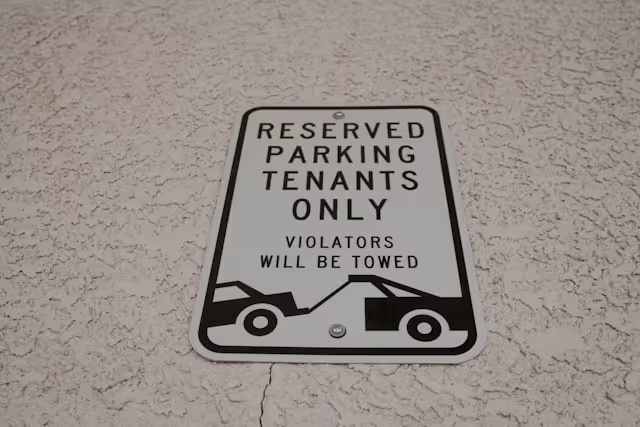
Blog
What Is Tax Bracket Creep and How to Beat It
Tax bracket creep is the silent killer of the buying power of many Kiwis, even some on minimum wage are being taxed 30%
The recent decision to raise the minimum wage from $21.20 an hour to $22.70 as of 1 April 2023 is for many Kiwis, a double-edged sword. Although the decision was made to alleviate the skyrocketing cost of living in New Zealand, it highlights a key issue facing nearly all wage-earners – tax bracket creep.
This means that someone working 41 hours a week on the minimum wage will now be paid $48,396.40 annually, placing them in the 30% income tax bracket. In other words, their real buying power hasn't increased, but they'll be paying a larger proportion of tax, meaning they're worse off after tax.
Basically, tax bracket creep will be in full effect, as the choice of doing overtime on minimum wage pushes workers into a higher tax bracket, ultimately reducing their earnings.
It’s not just low-income earners either, tax bracket creep impacts nearly anyone earning income.
How Does Tax Bracket Creep Work?
The Mechanics of Tax Bracket Creep
Chances are you’ve heard the term “tax bracket creep” before, but like many Kiwis, you may not be so sure what it means. In layman’s terms, tax bracket creep is what happens when inflation causes people to move up into higher tax brackets, even though their ‘actual’ income in real terms hasn’t increased. Low and middle-income earners end up paying more tax than they need to, whittling away what actually shows up as paid income in the bank accounts of many Kiwis.
To understand tax bracket creep, you must first understand how New Zealand’s current personal tax bracket system works. We have five different tax brackets, from low to higher income – and for every dollar you make within each bracket, you are taxed at that amount.
Current personal tax brackets:
- $0 - $14,000 tax of 10.5%
- $14,001 - $48,000 tax of 17.5%
- $48,001 - $70,000 tax of 30%
- $70,001 - $180,000 tax of 33%
- $180,000+tax of 39%
To illustrate this, if a person on minimum wage worked 41 hours a week, at the new income of $48,396.40, then:
- The first $14,000 they earn is taxed at 10.5%
- The sum they receive between $14,001 and $48,000 is taxed at 17.5%
- And the final $396.40 they earn over the $48,000 threshold will be taxed at 30%, amounting to $118.92 in tax.
To continue this example, let's assume this person is making 3% KiwiSaver contributions, so after paying all deductions they will now receive total annual take-home pay of $38,699. On the previous minimum wage, working the same 41 hours per week and still making 3% KiwiSaver contributions, they would have received $36,617. While it may sound like the person is now being paid more (the annual increase from $36,617 to $38,699), the person's take home pay has only increased by about 3.6%. This is mainly due to tax bracket creep.
In this example take-home pay has only increased by about half the current rate of inflation! In real terms, this means the worker is in a worse-off position - their purchasing power has reduced.
The New Zealand arm of global financial powerhouse Deloitte pointed out, “The pain of bracket creep is particularly felt when moving from the 10.5% to the 17.5% rate and from 17.5% to 30%.”
How Does This Happen?
Inflation, (as I’m sure you know, but let’s define it anyway) is the sustained increase in the cost of goods and services over time. Essentially everything costs more when inflation goes up.
Tax bracket creep is defined as the instance where wages or incomes go up, but tax brackets don’t. This pushes people into higher tax brackets. As the example above illustrates, the cost of living (inflation) increases have been at the same or a faster rate than after-tax wage growth, meaning real purchasing power has fallen.
Purchasing Power
Purchasing power is essentially the value of a currency expressed in relation to the quantity of goods or services that one unit of money can buy. Purchasing power can weaken over time due to inflation, as rising prices effectively decreases the quantity of goods that can be bought. Additional taxes such as GST and tax bracket creep can also impact purchasing power. For example, the 2010 raise of GST from 12.5% to 15% saw many goods and services go up in price in New Zealand.
The purchasing power of Kiwis has certainly decreased over recent times. Inflation rose 7.2% in the September quarter of 2022 according to Stats NZ, and The Reserve Bank of New Zealand predicts inflation will continue to hold at 7.5% for the first quarter of 2023. Price hikes on food, petrol, and nearly everything else coupled with rising interest rates and high inflation have brewed a cost-of-living crisis. New data from Stats NZ reveals an 8.2% increase in the cost of living for the average household in the last twelve months.
Coupling an already tough financial situation with tax bracket creep creates an additional burden for many Kiwis struggling to get by. Those on low to middle-incomes spend a far bigger proportion of their weekly income on rent, food, transportation, and other living expenses. Any added decrease in income due to tax bracket creep can make it challenging to make ends meet.
Learn more:
- Pay less tax
- Will you pay a wealth tax?
- New Zealand's newest tax
- More KiwiSaver changes have been made, here's what you should do about them
Taking Away Incentive
The Societal Danger of Tax Bracket Creep
What is potentially the most worrying aspect of tax bracket creep (apart from putting low-income Kiwis out of pocket) is that workers can lose the incentive to work overtime, to gun for a promotion or even to upskill when they have to pay so much more of it in taxes.
Time is precious to people, especially time they could spend with their family, and friends and with pastimes that excite them outside of work. If a low to middle-income worker is barely going to see the reward of picking up an extra shift, and tosses that up with quality time with loved ones – which do you think they will choose?
A Need for Brackets to Be Adjusted
Tax indexation is often said to be the solution to tax bracket creep. It refers to the adjustment of tax brackets to account for changes in the cost of living caused by wage inflation. It prevents taxpayers from being pushed into higher tax brackets due to inflation-adjusted income, solving the issue of bracket creep.
The last time tax brackets were adjusted in New Zealand was in early 2021 with the introduction of the 39% tax bracket, yet tax indexation itself did not occur. The brackets for income under $180,000 per annum were last changed in 2010 with a tax reform package. In the 13 years since, it’s fair to say changes to the cost of living call for indexation to ensure people’s purchasing power is sustainable.
According to Louis Houlbrooke of the New Zealand Taxpayers Union, “if brackets had been adjusted for inflation, the 30% tax bracket wouldn't kick in until $56,822, and minimum wage workers would be safe from punishingly high tax rates."
On the other side of this equation, it’s also noteworthy NZ Superannuation (commonly called “the pension”) and various social welfare benefits paid through Work and Income are annually adjusted up for inflation. Even child support is inflation-adjusted each year.
Stuff report that if tax thresholds had moved in line with inflation since 2010, they would be:
- $0 - $21,259 would be 10.5%
- $21,560 - $72,890 would be 17.5%
- $72,891 - $106,298 would be 30%
- $106,299 - $199,616 would be 33%
“It would mean annual tax savings of between $420 a year, or 17%, for people earning $20,000 through to $5,885 a year for those earning $200,000,” reports Stuff. For instance, someone who earned $60,000 would save just over $2,000 a year on tax.
As Joe Sothcott & Robyn Walker of Deloitte also point out, tax bracket creep has contributed to an increase in government tax revenue in New Zealand. The government collected $97.4b of taxes in 2021, $107.9b in 2022, and is forecasted to collect $117.4b in 2023. In other words, the government tax take is increasing at even faster rates than inflation! Deloitte tax partner Robyn Walker has said that people are more frequently questioning whether tax rates and thresholds should be adjusted.
There is concern that by reducing government revenue, central government services may suffer. We need taxes to service our education system, healthcare, central infrastructure, police and social welfare. Yet it seems only fair that tax brackets be adjusted to fit the mounting costs of living.
The Bottom Line: What Does Tax Bracket Creep Mean for You?
An unavoidable issue – unfortunately, tax bracket creep cannot be mitigated at an individual level, it requires policy based changes.
Therefore, it’s upon you to understand and plan. What you can do is understand the implications of tax bracket creep, when it kicks in and what proportion of your income will be impacted. If you know that your purchasing power will suffer from tax bracket creep, you could pick up a side hustle to increase your income and counteract the decrease. Or if it’s possible, look at your budget and cut down any unnecessary spending.
You may also like:

Lifestyle Creep: A Complete Guide

NZ Rent Forecast: What Tenants Can Expect


